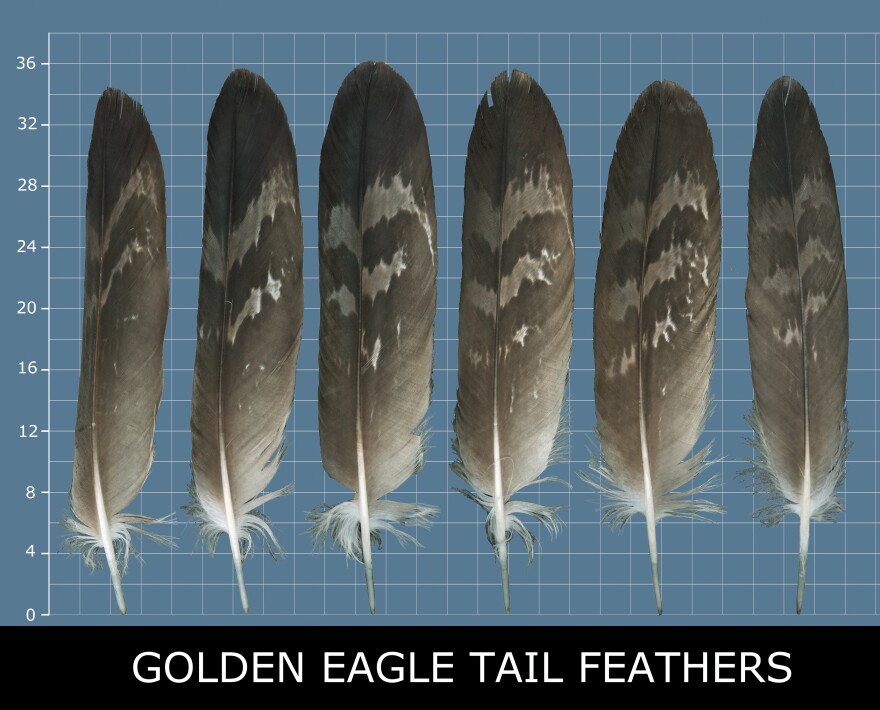If you find a bird feather – how can you tell which species it belongs to? An ornithologist in the Forensic Laboratory at the U.S. Fish and Wildlife Service pondered this question, after receiving numerous calls from special agents looking for a quick way to tell if someone was in possession of illegal eagle feathers.
He decided to scan feathers from Golden Eagles and Bald Eagles of various ages, uploading them to a website where agents could identify the feathers themselves. Then he added feathers of more species from the lab’s collection.
The website became The Feather Atlas, an image database dedicated to the flight feathers of North American birds. Forensic ornithologists use the atlas when asked to identify the bird species involved where feathers are found at a crime scene or air crash, or in a potential case of illegal wildlife smuggling.
The atlas is a great tool for teachers, artists, and inquisitive birders too. You can search a feather based on its color, pattern markings, size... or browse within a group of birds, like owls or ducks.
Just remember that all native North American bird parts, including feathers, are protected by federal law to prevent commercial trading and killing by collectors. Unless you have an Indigenous use exemption or a hunting permit, it’s illegal to take feathers home, even from a road kill.
So, if you come across feathers, be sure to admire and photograph them. Then leave them where they are.
This Earth Note was written by Diane Hope and produced by KNAU and the Sustainable Communities Program at Northern Arizona University.








